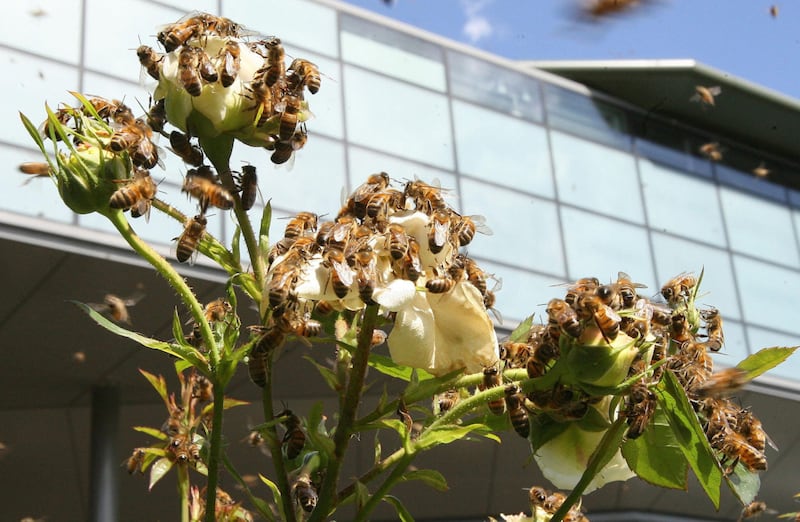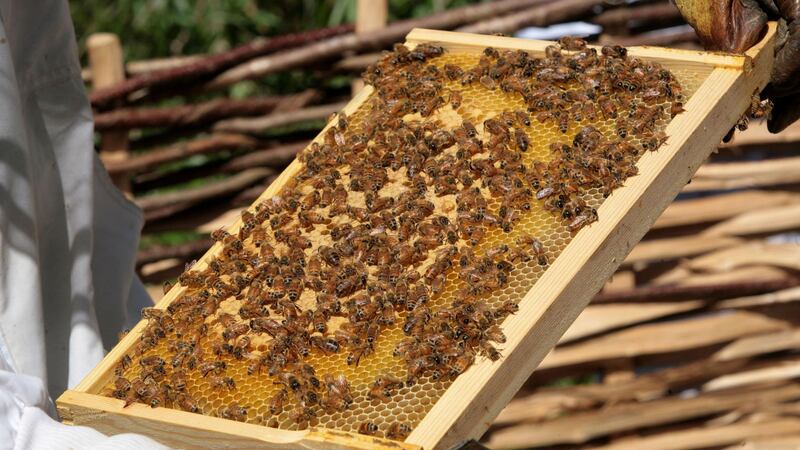Honeybees in a colony show similarities with interacting neurons in the human brain, research has shown.
Evidence of the “hive mind” emerged from a computer simulation study looking at the laws that govern bee nest building.
Scientists concluded that the way honeybees communicate and make decisions mirrors the workings of the brain.
Previous research has shown that the brains of humans and other animals follow certain rules known as psychophysical laws.
The new study found that while single bees do not obey these laws, the whole colony acting as a “superorganism” does.
Lead scientist Dr Andreagiovanni Reina, from the University of Sheffield’s department of computer science, said: “This study is exciting because it suggests that honeybee colonies adhere to the same laws as the brain when making collective decisions.
“The study also supports the view of bee colonies as being similar to complete organisms or better still, superorganisms, composed of a large number of fully developed and autonomous individuals that interact with each other to bring forth a collective response.
“With this view in mind, parallels between bees in a colony and neurons in a brain can be traced, helping us to understand and identify the general mechanisms underlying psychophysics laws, which may ultimately lead to a better understanding of the human brain.”

The study, reported in the journal Scientific Reports, found parallels between hive behaviour and three “brain rules” known as Pieron’s Law, Hick’s Law and Weber’s Law.
Pieron’s Law says that the brain is quicker to decide between two options when both options are of high quality.
In the same way, a honeybee colony is quicker to make a decision between two high-quality nest sites compared with two low-quality nest sites, the researchers found.
According to Hick’s Law, the brain is slower to make decisions when the number of alternative options increases. Similarly, the bee colony was slower to make decisions when the number of alternative nest sites increased.
Weber’s Law states that the brain’s ability to make the best decision depends on the relative minimum differences between high quality and low quality options. For high quality options the difference is large and for low quality options small.
This was also played out in the bee colony model.








